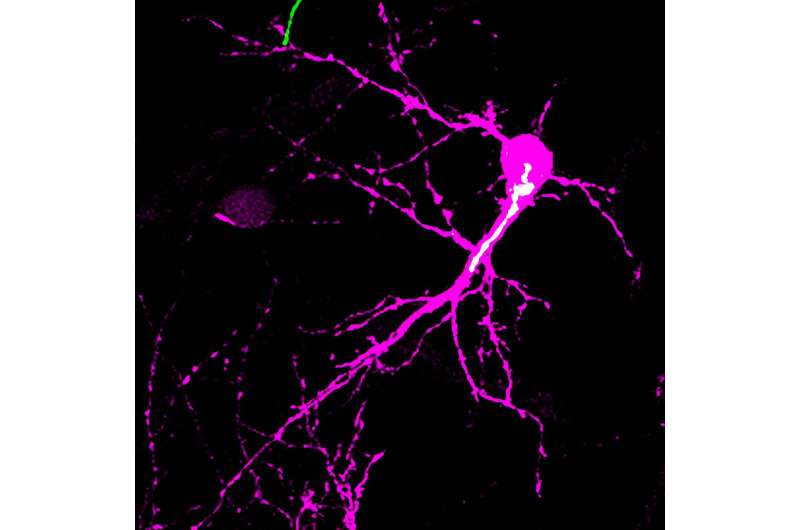This article has been reviewed according to Science X's editorial process and policies. Editors have highlighted the following attributes while ensuring the content's credibility:
fact-checked
peer-reviewed publication
proofread
Uncovering how the Golgi apparatus impacts early postnatal neuron development

Neurons are the cells that constitute neural circuits and use chemicals and electricity to receive and send messages that allow the body to do everything, including thinking, sensing, moving, and more. Neurons have a long fiber called an axon that sends information to the subsequent neurons. Information from axons is received by branch-like structures that fan out from the cell body, called dendrites.
Dendritic refinement is an important part of early postnatal brain development during which dendrites are tailored to make specific connections with appropriate axons. In a recently published paper, researchers present evidence showing how a mechanism within the neurons of a rodent involving the Golgi apparatus initiates dendritic refinement with the help of the neuronal activity received by a receptor of a neurotransmitter called N-methyl-D-aspartate-type glutamate receptor (NMDAR).
The paper was published in Cell Reports .
"We wanted to find the cellular mechanism that underlies activity-dependent neuronal circuit reorganization during early postnatal brain development," said Naoki Nakagawa, an assistant professor at the National Institute of Genetics in Shizouka, Japan. "The potential contribution of the dynamics of subcellular structures, such as organelles, to this process has been largely overlooked."
The organelle in question is the Golgi apparatus, which acts as a hub for the transport of materials within the cell. The positioning of the Golgi apparatus in a cell generates cell polarity by determining the direction of intracellular transport.
"Golgi-mediated cell polarity has been known to play an important role in earlier embryonic developmental events, such as the mitosis, migration, and differentiation of cells," said Nakagawa. "However, during the postnatal critical period of circuit reorganization, we did not know if the Golgi polarity is changed by neuronal activity or if the Golgi polarity change contributes to the remodeling of neuronal circuits."
To understand the role of Golgi polarity in dendritic refinement, scientists studied spiny stellate neurons in rodents. These neurons are found in a part of the rodent brain called the barrel cortex, which processes tactile information from whiskers. Spiny stellate neurons within the barrel cortex have asymmetrical dendrites that face the barrel center.
This unique dendritic structure is established during the first week after birth through refinement based on neuronal activity. In order to track the Golgi apparatus positioning during postnatal development, the Golgi-targeted fluorescent protein was expressed in spiny stellate neurons.
In the first few days of life, the Golgi apparatus in spiny stellate cells were apically polarized during days 1 through 3 after birth but ended up laterally polarized toward the barrel center by day 5 after birth. By day 15, when the asymmetric dendrite pattern was already established, the lateral polarization diminished. Researchers also looked at the placement of the Golgi apparatus within the dendrites. Dendrites that contained Golgi apparatus inside or at the base were longer and more branched than dendrites that did not.
Signals from the NMDAR are required for the lateral Golgi polarization, which, in turn, instructs the proper dendritic refinement. These were clear when researchers interrupted the NMDAR signal or the Golgi polarity. In both cases, the shape and direction of the dendrites changed in an inappropriate manner.
Looking ahead, researchers want to uncover more about how the Golgi apparatus affects neuron development. "We want to know how the neuronal activity moves the Golgi apparatus to the proper positions within neurons and how the Golgi polarization enables proper patterning of neuronal dendrites," said Nakagawa.
"We think that addressing these questions will provide a better understanding of what is happening within neurons during postnatal development and how it promotes circuit reorganization, which is an essential step for constructing sophisticated neuronal circuits in the brain."
More information: Naoki Nakagawa et al, Golgi polarity shift instructs dendritic refinement in the neonatal cortex by mediating NMDA receptor signaling, Cell Reports (2023). DOI: 10.1016/j.celrep.2023.112843




















